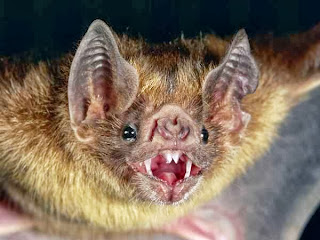Bats that nest inside curled-up leaves may be getting an extra benefit from their homes: the tubular roosts act as acoustic horns, amplifying the social calls that the mammals use to keep their close-knit family groups together.
South American Spix's disc-winged bats (Thyroptera tricolor) roost in groups of five or six inside unfurling Heliconia and Calathea leaves. The leaves remain curled up for only about 24 hours, so the bats have to find new homes almost every day, and have highly specialized social calls to help groups stay together. When out flying, they emit a simple inquiry call. Bats inside leaves answer with a more complex response call to let group members know where the roost is.
Gloriana Chaverri, a biologist at the University of Costa Rica in Golfito, took curled leaves into the lab and played recorded bat calls through them, to see how the acoustics were changed by the tapered tubular shape of the leaves.
"The call emitted by flying bats got really amplified," she says, "while the calls from inside the leaves were not amplified as much."
The inquiry calls from outside the roost were boosted by as much as 10 decibels as the sound waves were compressed while moving down the narrowing tube — the same thing that happens in an amplifying ear trumpet. Most response calls from inside the leaf were boosted by only 1–2 decibels, but the megaphone shape of the leaf made them highly directional. The results are published today in Proceedings of the Royal Society B.
Although flying bats almost always recognize their group members' response calls and pick out the correct roost to enter, bats inside a leaf seem unable to distinguish between the inquiry calls of friends and strangers.
Nature is Fun!!!
Sent from my BlackBerry® wireless handheld from Glo Mobile.


No comments:
Post a Comment